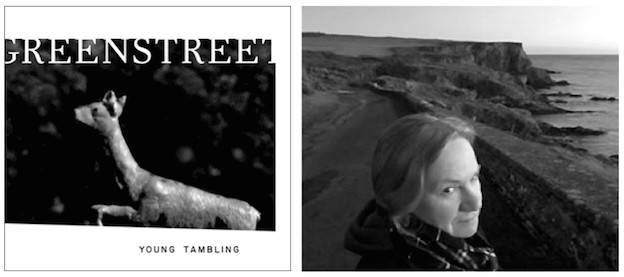Dear Kate Greenstreet

Young Tambling
Young Tambling
March 31, 2013 (Easter Sunday)
Dear Kate Greenstreet,
I was reading through the notes at the end of Young Tambling the other night when I discovered a typo. I don’t point this out to be a pedant or a scold. I am probably the last person who should call attention to a typo in someone else’s work, but this one has a story behind it, so here it goes.
You cite an essay by Martha P. Hixton, which in turn cites the Motif Index of Folklore by “Seth [sic] Thompson.” Thompson’s first name is actually “Stith.” I had a hard time with it the first time I saw it, too. What kind of a name is Stith?
The reason I am aware of this is that Stith Thompson is a distant relative. My mother’s maiden name is Thompson. She’s from Detroit, and her father, John Thompson, was from Indianapolis. When my grandfather died, in 1977, he left my mother a book called Denny: Genealogy in England and America.
The book was written by one Christopher Columbus Denny, a descendant of an old New England family that had come to Massachusetts in 1718. One of the Denny clan, Theodore Vernon Denny (b. 1800), a pioneer, left the Denny homestead in Leicester, Massachusetts, at the age of twenty-one and settled in Indianapolis, becoming one of its early citizens. His daughter Martha married into the Thompson family.
One of her sons, John, was my grandfather’s grandfather. John had a sister named Kate, a schoolteacher who never married. For many years, my mother, who hadn’t read the Denny book, thought it had been written by her great Aunt Kate, who everyone referred to as “the spinster.” Somewhat snidely, I should add. When I started reading through it myself, I discovered that Kate was not in fact the author, but the owner of the book. Turns out she had plans for a book of her own.
I am, it seems, very distantly related to Abraham Lincoln by way of a direct descendant of his mother’s first cousin. I tried to figure this out one day. Old Abe is a fourth cousin once removed or something like that. I accrue no benefit from this relation (or any other, truth be told). Aunt Kate had hoped to establish this family connection to Lincoln.
Another motive drove her research, however. She wanted to disprove the story (true, it turns out) that the president’s mother, Nancy Hanks, was born out of wedlock. She did extensive research on the Shipley, Mitchell, and Thompson families in Kentucky, Virginia, North Carolina, Maryland, and Pennsylvania.
Kate died in 1942, when my mother was five. She never published her work. Twenty of her notebooks compiled between 1874 and 1932 ended up at Indiana University in Bloomington, where Stith Thompson taught for many years. I think he was responsible for her papers being placed there. She may have willed them to him when she died. I am not sure, as I haven’t visited the archive.
Stith Thompson actually did write a book that traced the lineage of the Shipley, Mitchell, and Thompson families, based on Kate’s work. I tracked down a photocopy. According to cousin Stith, the Thompsons started out in Maryland before heading south into Virginia, and eventually west into Kentucky. Upon entering Kentucky, the group of settlers was attacked by Native Americans, and the father and mother were slain.
One of the daughters was taken captive. Her brother searched for her for several years, eventually buying her freedom from a trapper and returning her to Kentucky. She went to live on a cousin’s farm, where she was raised alongside Nancy Hanks, Lincoln’s mother. It’s a classic captivity narrative, so I take it with a grain of salt.
At some point, the Thompson clan moved for a brief period to Indianapolis but then decided they preferred Kentucky. Except, that is, for one member of the family: John Thompson, who remained. My family springs from John. Stith came from the Kentucky clan.
Apparently, Ben Marcus used Thompson’s Motif Index of Folk Literature as the basis for his book The Age of Wire. I have read neither.
I did read the rest of Young Tambling, by the way. The image of the severed deer with the recording device lodged in its torso troubled my sleep for days.
Edited byLaura Goldstein Michelle Taransky